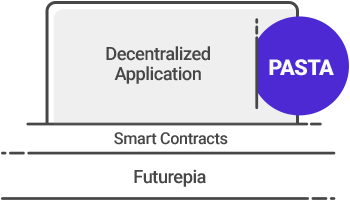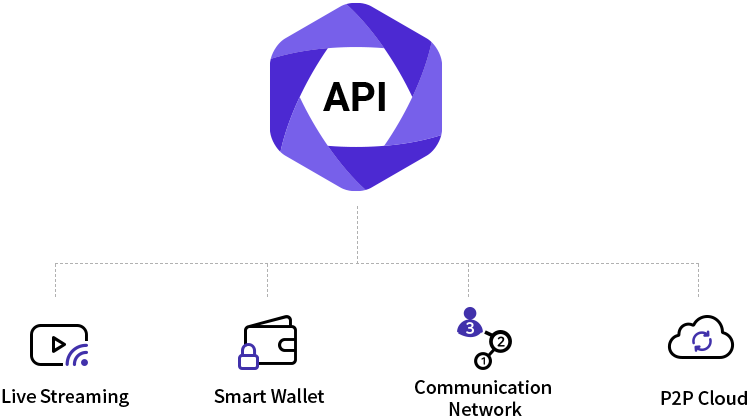Futurepia’s BP works on the consensus algorithm called ‘Dual Delegated Proof of Stake (DDPoS)’.
In order to better understand the 4th Generation of Blockchain, or DDPoS, let’s first discuss the progress of blockchain technology. n

PoW forms the foundation of Bitcoin’s block production algorithm. In PoW, there are miner who have high-tech equipment. They use this equiment to solve mathematical problems. Once the equations are solved, miner publish the solution to other miners and if 51% of the miners agree on the answer, a consensus is reached and the new block is added to the chain. The miner who solves the problem first gets a compensation fee as a reward from the network.n
In POS, instead of miners, there are validators. The validators stake some of their tokens in a specific wallet address for a set period of time. Following that, the validators bet on the blocks that they feel will be added next to the chain. When the block gets added, the validators get a block reward in proportion to their stake. The more tokens you own, the more block creation power you have.n
DPoS follows original PoS consensus model with improved speed, but it compromises the security. DPoS can be considered as a form of representative democracy in a blockchain where coin holders vote to select delegates also called ‘block producers.n
DPoS processes transactions faster than both PoW and PoS, yet DPoS has certain flaws in terms of security. It is not as decentralization. In DPoS, 21 block producers participate in the block production but because the BPs are exposed and the number of votes are quite small, this algorithm leaves the BPs vulnerable to attacks from hackers. n
" DDPoS is a new consensus algorithm that can provide greater speed than previous PoW & PoS algorithms and superior security than previous DPoS method algorithms. The main features of DDPoS are:"n
— To avoid the risk of collusion or potential attack against certain BPs, the block observer (BO) systems was created. During each round, 4 new Block Oberservers are arbitrariliy chosen to ensure a certain amount of diversity is present within the delegate proof of stake system.n
— DDPoS works with 21 BPs out of which, 17 are Master Nodes and 4 are randomly selected Block Observers.
— Because there are 21 definite block producers that produce a block every 3 seconds, it takes 63 seconds to determine irreversibility.
— For a transaction to be stored on the blockchain, 11 out of 21 BPs need to agree.
Futurepia is a public mainnet focused on allowing DApp developers to quickly and efficiently deploy their DApps. The advantages of selecting Futurepia will result favorably with quick setup, lower transaction fees, and interoperability of tokens with other DApps inside the Futurepia ecosystem.n
Estimated time : 30 - 45 days Estimated cost : Down payment of 100 million KRW (USD 85,000) 20% of the total coins issued, Maintenance costs TBD
Since BPs participate in the block production, they are required to have minimum infrastructure and sufficient resources to supply the infrastructure required to facilitate the proper functioning. Below is the table
"Futurepia also provides a customized mainnet option where the private mainnet is customized as per the needs of clients. Customized Mainnets are for businesses or enterprises (banks, insurances, government institutions etc.). Using Futurepia’s DDPoS algorithm, the number of Block Producer (BP) and Block Observer (BOP) can be adjusted according to the customers’ needs."
For example,) 17 BPs + 4 BOs = 21 nodes (can be adjusted to meet Partner needs)
- Other services offered: Node management, BP/BO operation management, services and connectivity support
Estimated time : 30 - 45 days Estimated cost : Down payment of 100 million KRW (USD 85,000) 20% of the total coins issued, Maintenance costs TBD
Sigmachain has extensive experience in developing a social media based DApp, called SNAC. SNAC creates a tokeneconomy using tokenized features to reward users. SNAC has a DAU of 15,000+, in over 40 countries and operates on both Android and iOS (website version also available).n
Various features of DApps
 PASTA (PIA Alliance Standard Token Agreement) is a technical protocol used for all smart contracts on the Futurepia blockchain (similar to Ethereum's ERC-20 created for token implementation).n
PASTA (PIA Alliance Standard Token Agreement) is a technical protocol used for all smart contracts on the Futurepia blockchain (similar to Ethereum's ERC-20 created for token implementation).n
PASTA features the functions that enable users to use multiple DApps with only one single ID, send specific tokens to other places, exchange coins and tokens in a single wallet by using a node which is safer and more secure.n

Single Sign On allows users to use 1 ID & Password for various DApps on the Futurepia blockchain. Currently, in order to use a DApp on Ethereum's blockchain, one has to buy Ether separately, do the KYC on exchanges, and remember wallet addresses & master keys for every single DApp. This is a massive roadblock in creating the mass adoption of blockchain.
SSO is the first step in bringing blockchain to everyday life by making the whole process frictionless and smooth. It enables a user to create a single ID that can be used across other DApps within a network, which allows for cross-marketing of other DApps. n

"PASTA protocol enables the users to have 1 ID & Password for all the DApps, this allows users to have just one wallet for multiple DApps. Moreover, users can more easily transfer and exchange PIA coin with various other DApp tokens within the Futurepia wallet."

Apart from providing mainnet core engine API, Futurepia also provides other useful modules such as live streaming, smart wallets, communication networks, and P2P cloud API. Futurepia is deployable both on Windows and Linux platforms, with over 100 APIs already developed.n
BP stands for Block Producer and as the name suggest these are the nodes that participate in the block production.
Basically, BP has the following 2 functions to perform:
Essentially, BPs perform the same function as miners on a proof-of-work (PoW) blockchain or staking nodes on a proof-of-stake (PoS) blockchain.
You can think of the BP as an Immigration Officer at the airport. It is his/her role to check whether the person coming in or going out of the country has broken any laws or not. Once the BP or Immigration Officer verifies that everything is order, he/she will add the information to the data base.n
First, the block generation sequence of the 17 masternodes (BPs) and the 4 random nodes (BOs) are determined. Next, all of the nodes begin generating blocks.
Then, the masternodes (BPs) are maintained as they are, whereas new random nodes (BOs) are selected. These steps are repeated after every 63 seconds.n
Since BPs participate in the block production, they are required to have a minimum infrastructure and sufficient resources to facilitate proper block production. Details are in the table below. n